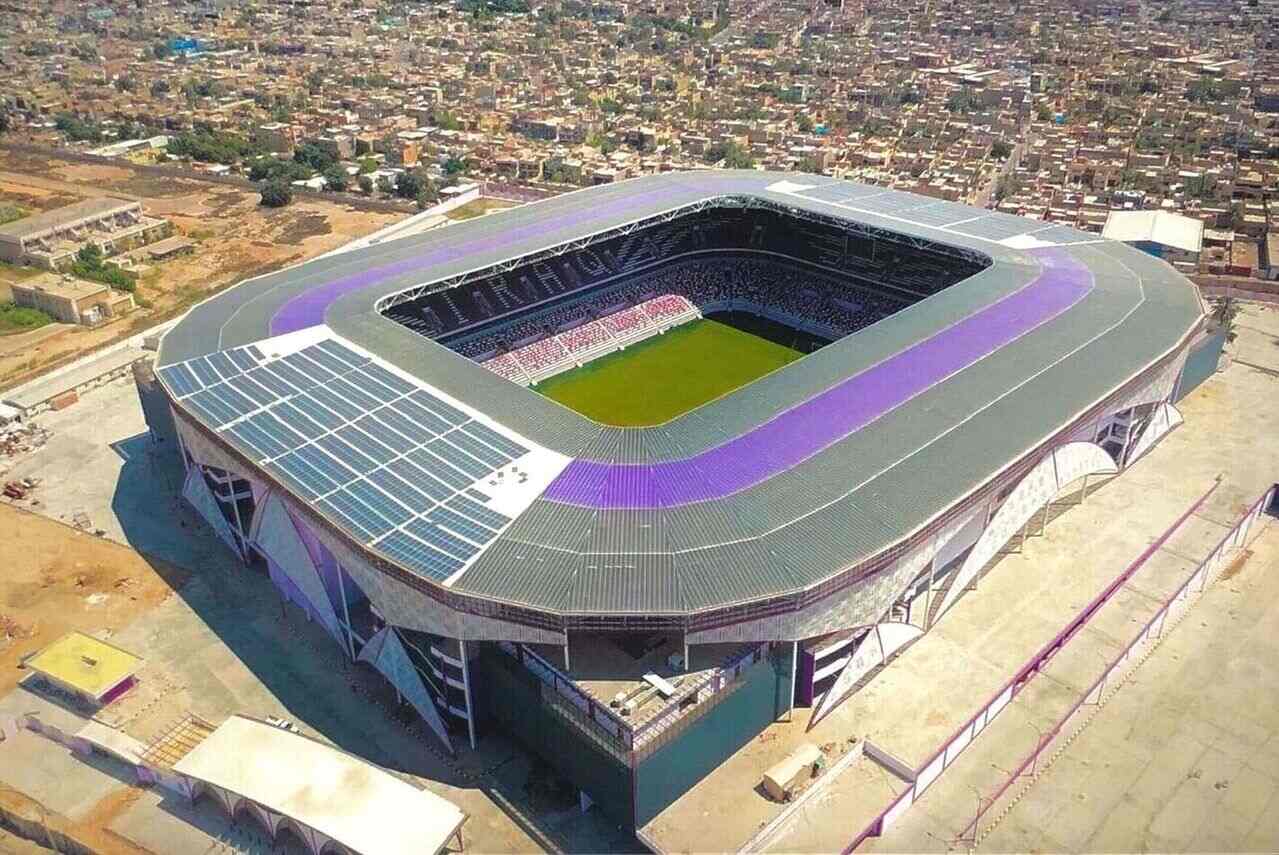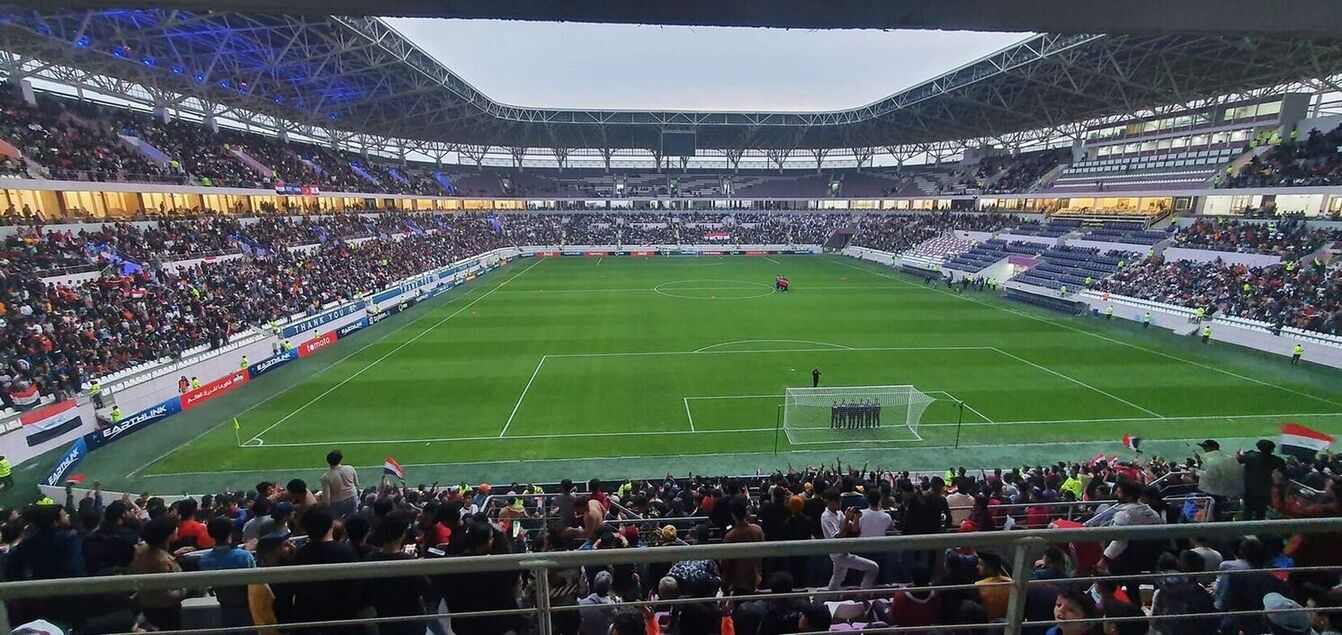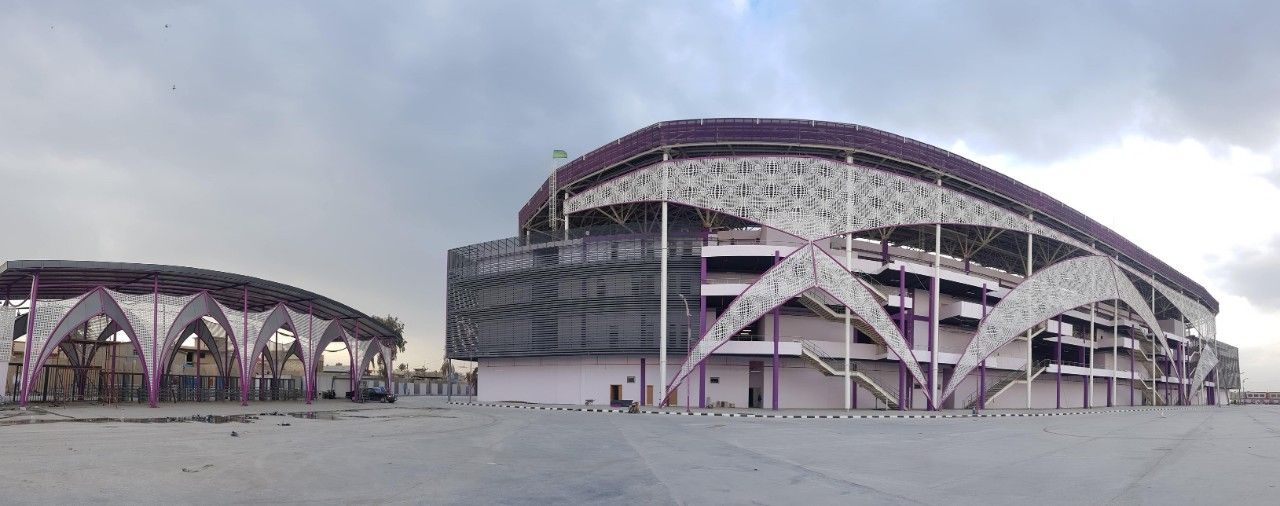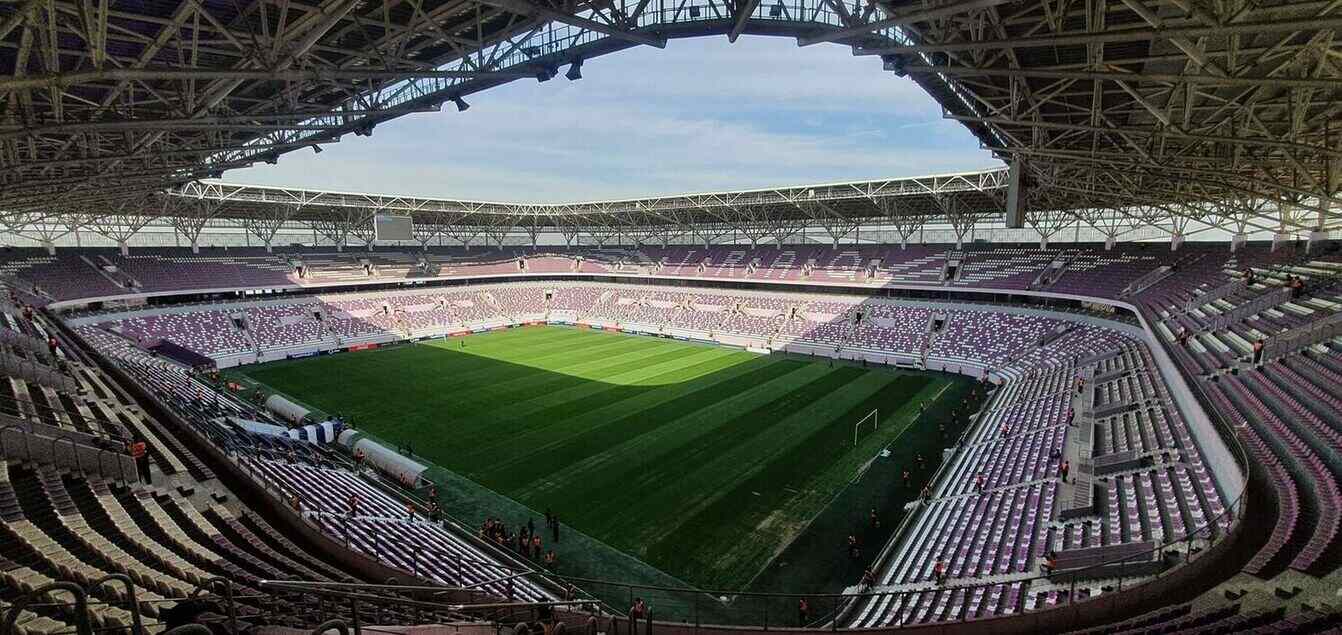New stadium: Turbulent history of Al-Madina Stadium
source: StadiumDB.com [TS]; author: Tomasz Sobura
 The story behind the construction of this venue is a ready-made script for an action movie. We would be watching kidnappings, the Islamic State threat, an economic crisis and a pandemic. After many years, all the difficulties were overcome and the facility was completed.
The story behind the construction of this venue is a ready-made script for an action movie. We would be watching kidnappings, the Islamic State threat, an economic crisis and a pandemic. After many years, all the difficulties were overcome and the facility was completed.
Advertisement
7 years of works including all disruptions
Al-Madina Stadium is a football-specific venue seating 32,000 spectators. According to various sources, it cost between $100 and $120 million. The contractor of the project was the Turkish company Nurol İnşaat that signed a contract with the Ministry of Youth and Sports in January 2012. Preparatory work started in the summer of that year.
The facility was to be ready in the second half of 2014. However, the unstable situation in the country related to the war with Islamic State and the economic crisis led to the suspension of works in 2014.
Moreover, in 2015 a dramatic event occurred when a group of extremists kidnapped 18 Turkish workers from a construction site. Fortunately, they were released, although 16 of them spent almost a month in captivity.
Construction was not resumed until May 2018. From that moment on, the pace of work was really impressive, which allowed the stadium to be completed on December 18, 2019.
The arena was supposed to be inaugurated in early 2020, but the outbreak of the coronavirus pandemic postponed the opening ceremony. The official inauguration took place on December 1, 2021 during the final match of the 2021 WAFF U18 Championship, when Iraq faced Lebanon (0-0, 3-2 after penalties).
Solar power plant on the roof
The stadium is located in the Sadr City district in the northeastern part of Baghdad. The present name of the facility is its fourth in history. Initially, the arena was called Al-Sadr City Stadium. Later (2017) it was renamed Al-Habibya Stadium, and in 2019 Al-Shohada Stadium. The current name was given in August 2020.

© Kari0t (Wikimedia Commons)
Originally, the stadium renderings showed an oval shape (without an athletics track), but the concept was changed to a simpler one. The venue was built on a rectangular plan with rounded corners.
The façade of the building is covered with a metal mesh creating various geometric forms resembling triangles and crescents. The elevation is very airy that ensures perfect ventilation of the stadium interior.
Initially, the roof of the stadium was to be covered with sheet metal, but over time the plan was changed and a more expensive solution was implemented, namely black and purple polycarbonate.
On the south and north sides of the rooftop there are large stretches of solar panels, forming a power plant with an area of 7,000 square metres and a voltage of 1,200 kV. It is one of the first installations of this type in the Middle East. The lighting consists of 136 lamps built into the canopy and evenly distributed around the stadium.
The auditorium has a classic layout typical for football arenas. Two tiers of stands are separated by a strip of business seats. Behind the goals there are two large screens that are placed under the roof. The area of the stadium is 30,000 square metres.
Author: Tomasz Sobura
Advertisement

 StadiumDB
StadiumDB ©
© 
 ©
©